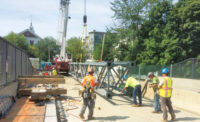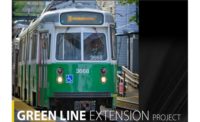The Colorado veterans hospital and Bertha, the Seattle tunnel boring machine, are sad symbols of public works incompetence. We need to be more honest from the outset of big projects—stadiums, hospital complexes, tunnels, light rail systems—in stating that they can easily run into trouble with scope, schedule or budgets.
As it is now, the media enjoy being able to harpoon the elected officials and public works agencies and contractors when, long after the fantasy budgets and schedules are first aired, the schedule and budgets run way over.
The U.S. 183 toll lane project in Austin, for example, is already having those type of issues. The first price affixed to the job, $226 million, was generated in 2011. Texas transportation officials, after big needed scope increases and last year's contract award, have recently corrected that figure. The 2015 cost for Texas taxpayers now turns out to be more than triple the 2011 number.
The Green Line Extension project in the Boston area, where the Massachusetts Bay Transportation Authority recently sent the contracting team and design management consultant packing, is also worth considering. It involves 4.7 miles of track and electrical works along with stations and possible complications involving the route through an urban area.
New Approach Used
Monday-morning quarterbacks pointed out that MBTA's contracting and project-delivery method, called construction manager/general contractor, allows the contractor to provide input on design but failed to induce the contractor to limit its price.
That doesn’t account for the fact that this was a complex project being built under a delivery method chosen to speed the time to completion by starting construction before the design was done.
A light-rail system isn't a pair of pants, or an iPhone. You can tell what those will cost way ahead of time.
After awarding the main construction role to White-Skanska-Kiewit, and following some form of collaboration on the design, the contractor provided a guaranteed maximum price with a fee based on the costs and value of the work. I don't know the exact formula used to determine that fee.
Three out of the first four packages came in high, and the next and biggest one, budgeted at $347 million, appears to have been done, and possibly priced, but not awarded.
That’s where the sticker shock may have awakened the MBTA and state officials to the cost issue.
Hoping to work with MBTA on the project again, the chief executive of the main partner in the terminated contracting joint venture said he believes in the usefulness of the CM/GC contracting/project delivery method. And that the contracting venture worked collaboratively to build "the design provided."
In my opinion, White-Skanska-Kiewit can do no more than provide MBTA with a fig leaf.
What the fig leaf covers is some crucial backstory about why the value engineering or cuts that needed to be made hadn't been done in the collaboration phase or earlier.
MBTA could have done all public works a favor by coming out plainly and saying, if it is the case, “We had to hurry, these things are hard to build, the design was nowhere near finished, the scope not completely understood, but we needed to bring the contractor on board and start ordering long-term items and building."
Isn't that unspoken reality what actually happens so many times?
Warning Labels
We need to stick a big yellow warning label on every public works project that requires complicated permitting, right-of-way acquisition, legal entanglements, intricate mechanical and electrical packages, tunnels in urban environments, big fabricated parts with tiny tolerances, or larger numbers of skilled trades than are ordinarily available. On the label should be these words:
Danger: cost overruns and delays possible. Scope not yet fully settled. Pricing to be determined later.
As things stand now, there are more warnings about the fluctuating price of an airline ticket than on a billion-dollar public construction project.
Public officials, with the exception of New Jersey's Governor Christie and a few others, generally play down the risks because, frankly, what will be built is usually badly needed. So they exhibit the “go for it” mentality and don't quibble with the initial pricing put forward to the public. The media, including ENR, play along. The idea being that if the public was enlightened fully to the risks involved, nothing would get built.
The engineers and contractors who build for a living and live to build cheerlead the projects into their first phase, conveniently ignoring all the uncertainties that such matters involve.
Then when the projects run late and over budget, journalists pounce on the story, and the public has every right to feel betrayed.
To be sure, the Green Line extension, if finished, would improve the quality of life and air. So will the California High Speed Rail system, if that is ever fully built.
But how do we secure the public trust? More transparency, I say.
And no more fig leafs, please, from anyone.






Post a comment to this article
Report Abusive Comment